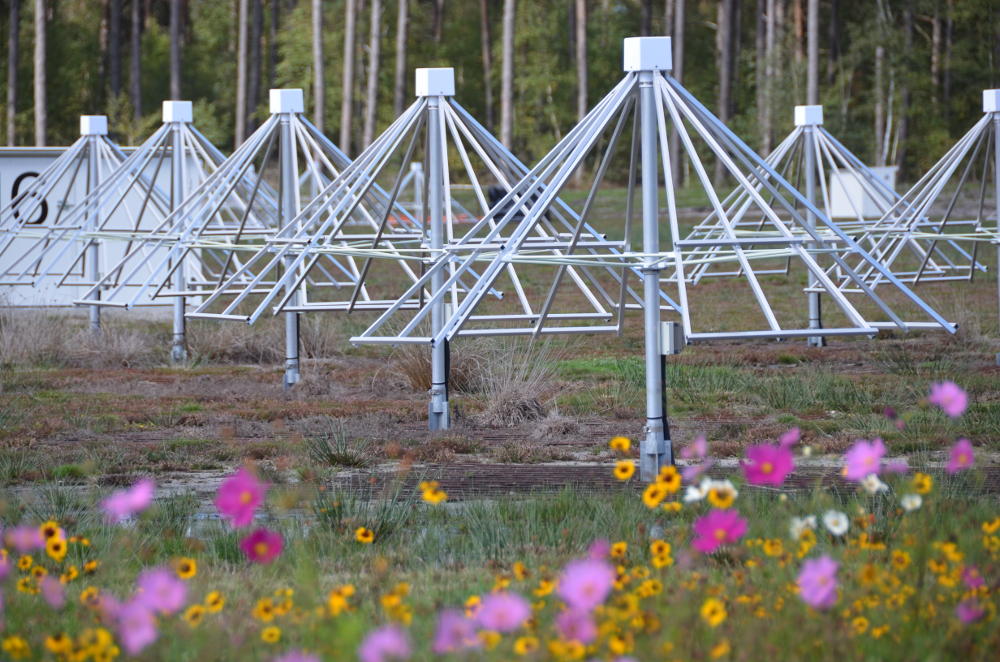
SKA ? The acronym stands for the largest radio-telescope ever conceived : the « Square Kilometer Array ». This is an international project for a radio-telescope working at low and medium frequencies with a 1 km square, to be built in South Africa and in Australia.
Coordinated by the CNRS, the consortium « Maison SKA-France » has just become the 12th member of SKA-O, the organization in charge of the project’s feasibility studies. It is currently composed of five institutes and research centers (the CNRS, the Observatoire de Paris-PSL and the Observatoire de la Côte d’Azur, the Bordeaux and Orléans universities) as well as seven industrial groups (Air Liquide, ATOS-Bull, Callisto, CNIM, Kalray, TAS), and other partners are likely to join the consortium in the near future.
Many French laboratories are participating in the preparatory technical studies for the project, and some of them have been involved since the year 2000.
SKA-Ois thus now supported by South Africa, Australia, Canada, China, Spain, France, Great Britain, India, New Zealand, the Low Countries, and Sweden.
Once operational, SKA, the « Square Kilometer Array », will be a very important tool for the study of the Universe, and should lead to significant progress on questions such as tkhe formation of the first generations of stars and galaxies soon after the Big Bang, the origin of magnetic fields in the Universe, and even very advanced tests of Einstein’s theory of relativity.
Implication de l’Observatoire de Paris dans SKA
The Paris Observatory plays a major role in the national preparatory structure for SKA, from both the scientific and technological points of view : scientists and engineers from the Observatory make up an important fraction of the 200 French authors of the « Livre blanc SKA » (the SKA white book). The development of the Nançay radioastronomical observatory has in particular been a major factor in the Paris Observatory’s involvement in SKA.
Of obvious strategic importance for the Observatory, the points of interest are widespread and involve all the departments and scientific sections of the establishment :
• participation in the international scientific work groups,
• development in micro-electronics for SKA’s ’medium frequency » section,
• participation in the studies and the development of SKA’s « medium frequency » part,
• data analysis and image reconstruction.
The NenuFARproject, New Extension in Nançay Upgrading LOFAR, directed by Philippe Zarka,is being developed on the Nançay site of the Paris Observatory ; it is currently in the phase of scientific validation. Over and above its scientific and technological interest, NenuFAR will play an important role in preparing the French scientific community for the use of SKA.
Stéphane Corbel, Director of Nançay’s Scientific Unit, is also the director of the CNRS-INSU’s Action Spécifique SKA-LOFAR .
With the renewal in 2016 of the Action Fédératrice « Radiotelescopes for the XXIst century », the Paris Observatory has clearly announced its political will to support the scientific and technological activities associated with SKA and to contribute to the development of the low frequency radio domain at the Observatory and beyond.
Fabienne Casoli has been charged with the work of ensuring the coherence of the various activities related to SKA, and so ensure the coherence of the diverse activities and even amplify them if possible. She is the essential interface between the Observatory and the national departments involved in the development of SKA, and notably the CNRS-INSU and the Maison SKA-France.


